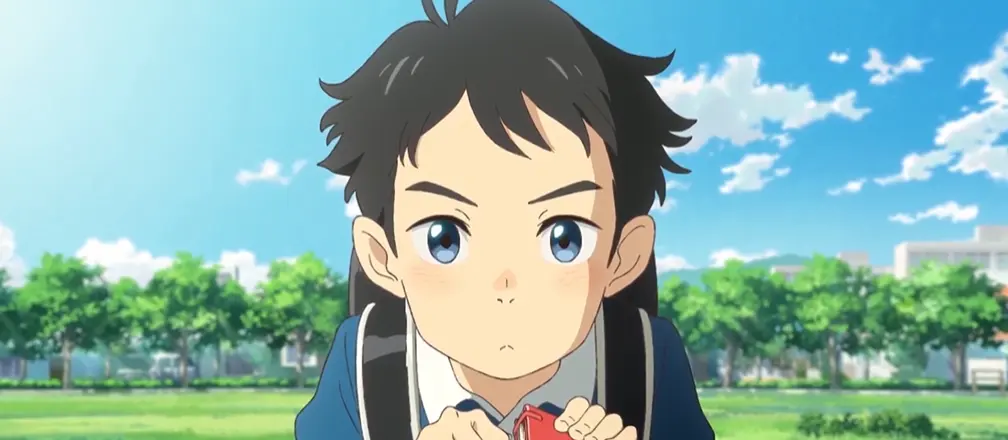Penguin Highway: The Journey of a Boy Growing Up

The Fantasy of Tomihiko Morimi
Tomihiko Morimi is a Japanese fantasy novelist whom I personally admire. “Penguin Highway” is referred to as a “non-Morimi-style” work, differing entirely in tone and theme from his other writings.
His works, such as “The Tatami Galaxy” and “The Eccentric Family,” find humor in the mundane lives of adults and are often imbued with a sense of weariness. In contrast, “Penguin Highway” offers a child’s perspective.
Morimi once edited an anthology of short stories by Osamu Dazai titled “Kisho to Egao.” He admitted that rather than being influenced by Dazai’s famous works like “No Longer Human” or “The Setting Sun,” it was Dazai’s humorous writing and engaging dialogue that left a more significant mark on him.
Regarding his writing process, he confessed that despite contemplating settings outside Kyoto, he ultimately found it impossible. It seems he can only depict and imagine within his familiar circle of daily life.
Penguin Highway
Synopsis:
During a dull and uneventful summer, a group of penguins mysteriously appears in a small town far from the sea. After witnessing a cola can thrown by a dental assistant (voiced by Yuu Aoi) transform into a penguin, an inquisitive young boy named Aoyama (voiced by Kana Kita) becomes determined to uncover the truth, embarking on an unforgettable summer adventure filled with wonder.
Overview
The vast world is full of unending mysteries. Amid the innocence of youth, the boy faces storms and ultimately captures his sweet dream through growth. However, growing up often comes at the cost of letting go…
The Female Lead (The Assistant): A mysterious figure who can conjure penguins, she is the source of the enigmatic occurrences. She plays chess with Aoyama, indulges some of his whims, is beautiful and intellectual, and admires his scientific mind, calling him the “Child of Science.”
The Male Lead, Aoyama: A precocious fourth-grader who views everything, including the assistant’s breasts, as a subject of study. He considers her the epitome of perfection.

Elementary Students and Curiosity
“A gentleman’s passions are tempered by reason.” From a child’s perspective, such a storyline adds a touch of humor, much like “Your Name,” where adolescent traits are subtly revealed without overshadowing the narrative. The protagonist’s age brings comedic moments to the film.
Solving Mysteries
The movie revolves around the mysteries of the “sea,” the assistant, and the various animals she generates.
Aoyama’s father provides intriguing advice on his research:
- Break down big questions into smaller ones.
- Ask many questions and draw connections.
- Look at problems from a broader perspective.
Imagine if the light in your house goes out. What could be the reason?
A tripped circuit breaker? A short circuit?
These seem plausible.
But then you realize the entire town is dark.
Suddenly, you have a new hypothesis.
By linking his studies on “The World’s End,” “Channel Research,” and “The Assistant’s Breasts,” Aoyama discovers the hidden connections between the mysterious events, experiencing a sense of clarity as the pieces fall into place.
Although the movie is a fantasy, the investigative process employs a scientific lens, giving the narrative a rational tone from the start. The protagonist’s youthful perspective makes the themes more lively, with subtle explorations of family, friendship, and more.
Yet, the most remarkable aspect is how these themes are woven into Aoyama’s innocent feelings for the assistant, enriching but never overshadowing the main plot.
The Revelation
By connecting all the elements, Aoyama arrives at the following relationship (approximately):
The movie gradually unravels these connections with a well-paced rhythm that keeps the audience intrigued.

The assistant is both a beneficiary and a predator of the “sea,” forming a miniature ecosystem.
Professor Wang Peng interprets this as a reflection of “the coexistence of truth and fallacy,” suggesting that “the assistant embodies truth.”
Hence, the protagonist’s admiration for her symbolizes an admiration for truth—enigmatic and distant. Despite his precociousness, Aoyama remains a child.
Ultimately, due to the sea’s instability, the assistant chooses to destroy it, sacrificing herself to prevent the sea from overwhelming the town.
“The sea” becomes a truth known only to Aoyama. It serves as his rite of passage, guiding him toward exploring the world.
I agree with Professor Wang Peng:
The assistant embodies beauty and mystery, making Aoyama, the “explorer,” instinctively develop feelings for her.
However, I believe it is equally vital to recognize that “Penguin Highway” is a coming-of-age story:
Initially, Aoyama feared losing his baby teeth.
One night, his younger sister expressed her fear that “someday, Mom might die.” From that moment, Aoyama’s transformation became more pronounced. With the assistant’s help, he courageously overcame his fear of losing a tooth.
Ultimately, he accepts the assistant’s sacrifice, signifying his growth.
Through this journey, Aoyama becomes braver and transitions from pure scientific reasoning to a more emotional perspective, grounded in a belief in science and the courage to confront growth. The assistant provides him with a new way of seeing the world.

The assistant serves as a “guide.” Every child may have such a figure in their heart—someone who grows old and eventually leaves. While it brings sorrow, it also teaches acceptance and growth, shaping the child into a better adult.
The film is incredibly gentle, frequently hinting that “the sea” represents the world’s end. This concept reshapes Aoyama’s worldview, becoming a part of his growth. Since the assistant is not human, her disappearance at the end leaves room for interpretation about the “sea” and its connection to the world’s end.
A fantasy film grounded in science, mended with warmth and growth, “Penguin Highway” charts a unique path.
So, what lies at the end of the Penguin Highway?
It is the silhouette of a boy running, exploring amidst loss, and ultimately growing into an exceptional adult.
Keep running, along the Penguin Highway, until you reach the world’s end!


